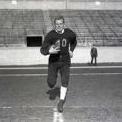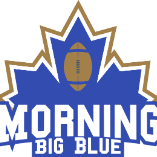-
Posts
29 -
Joined
-
Last visited
Profile Information
-
Location
Left Coast
Recent Profile Visitors
2,184 profile views
Stats Junkie's Achievements
-
 Stickem reacted to a post in a topic:
Obscure moments and players in Bombers history
Stickem reacted to a post in a topic:
Obscure moments and players in Bombers history
-
 Dr Zaius reacted to a post in a topic:
Obscure moments and players in Bombers history
Dr Zaius reacted to a post in a topic:
Obscure moments and players in Bombers history
-
 Bigblue204 reacted to a post in a topic:
Obscure moments and players in Bombers history
Bigblue204 reacted to a post in a topic:
Obscure moments and players in Bombers history
-
 bearpants reacted to a post in a topic:
Obscure moments and players in Bombers history
bearpants reacted to a post in a topic:
Obscure moments and players in Bombers history
-
 Noeller reacted to a post in a topic:
Obscure moments and players in Bombers history
Noeller reacted to a post in a topic:
Obscure moments and players in Bombers history
-
 Mark F reacted to a post in a topic:
Obscure moments and players in Bombers history
Mark F reacted to a post in a topic:
Obscure moments and players in Bombers history
-
 Rod Black reacted to a post in a topic:
Obscure moments and players in Bombers history
Rod Black reacted to a post in a topic:
Obscure moments and players in Bombers history
-
 wbbfan reacted to a post in a topic:
Obscure moments and players in Bombers history
wbbfan reacted to a post in a topic:
Obscure moments and players in Bombers history
-
 JCon reacted to a post in a topic:
Obscure moments and players in Bombers history
JCon reacted to a post in a topic:
Obscure moments and players in Bombers history
-
 Mark H. reacted to a post in a topic:
Obscure moments and players in Bombers history
Mark H. reacted to a post in a topic:
Obscure moments and players in Bombers history
-
 Stats Junkie reacted to a post in a topic:
Obscure moments and players in Bombers history
Stats Junkie reacted to a post in a topic:
Obscure moments and players in Bombers history
-
 Stats Junkie reacted to a post in a topic:
Obscure moments and players in Bombers history
Stats Junkie reacted to a post in a topic:
Obscure moments and players in Bombers history
-

Obscure moments and players in Bombers history
Stats Junkie replied to Arnold_Palmer's topic in Blue Bomber Discussion
A few moments from 1953 - the year that "The House that Jack Built" opened In July, the Bombers brought in Tommy Thompson to be the backfield coach. Thompson played QB in the NFL (1940-1950) and guided the Philadelphia Eagles to championships in '48 & '49. Speculation was that Thompson was really in town to play QB. When training camp opened, Thompson was in full gear. He impressed enough that he was the opening day QB for Winnipeg. He would start 3 games total. At 35 years old & blind in one eye, Thompson was unable to play defence. Teams could dress 8 imports (all starters) so If he wasn't starting at QB, he wasn't dressing for the game. On October 1, Thompson was released as a player and he left town. Jack Jacobs was in the doghouse of Coach George Trafton for most of the season. In this era, it was a 10 yard penalty for "Coaching from the sidelines" if there was any communication from the bench to players on the field. It was up to the QB to call his own plays. The problem - Jack Jacobs had an obvious tell. Edmonton figured it out in 1952 and by 1953 every other team was aware too. If Jacobs called a pass, he had the offence in a spread formation. If he called a run, the offence was in a bunch formation. The linebackers would adjust based on the formation. Trafton tried to get Jacobs to mix things up so it wasn't obvious what the play call was but Jacobs wasn't able to oblige. With 3 games to go in the regular season, Trafton benched Jacobs and replaced him with Joe Zaleski. Heading into the playoffs, Jacobs was relegated to 3rd string QB behind Joe Zaleski & Geoff Crain. In the first game of the semi-final, Lorne "Boom Boom" Benson gained 163 yards on 23 carries including a playoff record 6 rushing TDs. On defence, the Bombers intercepted 8 passes. Bud Grant set a playoff record with 5 picks - the others went to Jack Jacobs, Tom Casey & Neill Armstrong. In game 1 of the west final, Jack Jacobs replaced Joe Zaleski at QB for the 2nd half of the game. Zaleski remained in the game at flying wing because Trafton wanted him to call the plays for Jacobs - that didn't work too well. All told, Zaleski started 9 games in a row leading up to the Grey Cup. Jack Jacobs was given the start for the Grey Cup game. -

Obscure moments and players in Bombers history
Stats Junkie replied to Arnold_Palmer's topic in Blue Bomber Discussion
Jefferson did have an interception in the game but he was tackled after a return of 4 yards. He scored his TDs on interceptions by Bennett & Battle. Hailey also had an interception in the game. -

Favourite and least favourite Bomber
Stats Junkie replied to TrueBlue4ever's topic in Blue Bomber Discussion
My favourite is Joe Poplawski A candidate for least favourite is Louie Sakoda. He wins the job to replace Alexis Serna then injures his calf one day prior to the game. Sakoda hides the injury from the team until game day at which point it is too late to replace him on the roster. The Blue Bombers wasted a valuable DI spot on him. -
-
Danny McManus is the only QB with multiple wins. He went 6-0 as a Blue Bomber. · McManus actually went a CFL record 8-0 before his first loss. In 2014, BLM was credited with the CFL record when he went 7-0 but I have been informed that the record has been amended - problem is very people know it. Modern day QBs who went 1-0 are Norman Gibbs (1983-1985) & Brian Ah Yat (1999-2001). Pre-War QBs who I have at 1-0 include Alex Lindsay, Fritz Hanson & Johnny Lake.
-
 Stats Junkie reacted to a post in a topic:
WF - Bombers @ Riders
Stats Junkie reacted to a post in a topic:
WF - Bombers @ Riders
-
From those game notes Cody Fajardo - A First Since 1954: - He is likely to be making his first career playoff start in this game. The last Riders' QB to start a playoff game in the year of his first CFL QB start was Larry Isbell in the 1954 West Semi-Final ... and coincidentally that game was against Winnipeg. - It should read … The last Rider's QB to start a playoff game in the year of his first CFL QB start was Gary Lane in the 1970 West Final ... and that game was against Calgary.
-
For the past several seasons, I have been tracking punting numbers in different ways. I do this primarily by dividing the punts into two categories - Own Side of Centre & Opposition Side of Centre I also track the net yardage of a punt from the line of scrimmage (LOS) on the punt play to the LOS on the next play. This helps adjust for the limitations of the CFL formula for net average. This season, the CFL started to track what it calls True Net which is very similar to my calculation. When punting from your Own Side of Centre, the primary objective should be net yardage. Justin Medlock is middle of the road for gross average but he ranks 3rd in net average. Meanwhile, the western "all-star" Jon Ryan leads the league in gross average but ranks near the bottom in net average. As Hugh O'Neill noted in a reply to one of my tweets #GrossIsGross When punting from the Opposition Side of Centre, the focus is more on field position rather distance. I track the percentage of punts that pin the oppoistion inside the 20 yard line, the percentage of kicks that result in singles and net average (this is less important here). Justin Medlock ranks a close 2nd to Hugh O'Neill with 80% of his punts pinnings the opposition inside the 20. He is the only regular punter to not register a punt single from the opposition side of centre. Medlock also leads in net average from this range. Jon Ryan is once again near the bottom in all these categories. Only 34.8 % of his punts pin the opposition inside the 20. A lot of this can be attributed to the fact that 39.1% of his punts went for singles. Partly due to the number of singles and partly due to coverage penalties, Ryan ranks near the bottom in net average as well. The final aspect of punting that I looked at was punting & coverage penalties. Once again, Justin Medlock is near the top with only 4.7% of his punts resulting in punt/coverage penalties. Jon Ryan ranks near the bottom again with 21.5% of his punts resulting in penalties.
-
 Stats Junkie reacted to a post in a topic:
Divisional All-Stars
Stats Junkie reacted to a post in a topic:
Divisional All-Stars
-
 Stats Junkie reacted to a post in a topic:
Harris is now the Canadian All Time Leader in Rushing Yards
Stats Junkie reacted to a post in a topic:
Harris is now the Canadian All Time Leader in Rushing Yards
-
I have points and games played for Normie Kwong (1948 & 1949) but no other individual numbers for the season. The Winnipeg Tribune mentioned that Kwong & Harry Hood accumulated about 150 yards (divided equally) in the September 12 game. The Trib had a more detailed account for the September 17 game - Kwong had runs of 71, 16, 12, 8, 6 & 0 yards. Kwong played all 12 games in 1948 but was only listed as a starter once. In 1949, he played all 14 games and was listed as a starter 9 times. In this era, if you subbed out of the game you could not return until the following quarter. As a result, starters usually played big minutes. 600 yards seems like a reasonable estimate.
-
I have numbers back to 2016. Teams have been successful 29/55 (52.7%). 2016 2017 2018 2019
-
Justin Medlock has made 58 consecutive field goals from inside the 40 yard line. Based on my research, it appears as though Paul McCallum holds the CFL record with 59 consecutive field goals inside the 40 yard line (2010-2012). Others on the list include Sean Whyte 57 (2015-2018), Justin Medlock 50 (2015-2017) & Lewis Ward 49 (2018-2019) I have submitted this to Steve Daniel of the CFL for consideration.
-
The team record that Chris Streveler 'broke' dates back to 1956. John 'Buddy' Leake gained 633 yards rushing that year. Buddy Leake was a starting HB for all 16 games in 1956 and also served as the backup QB to Eagle Day. Next on the list is Kenny Ploen who had 541 yards rushing in 1960. When not playing QB, Ploen shifted to safety. Others on the list include: Matt Dunigan 517 yards (1993), Eagle Day 477 yards (1956) & Steven Jyles 452 yards (2010). * Leo Lewis did play some QB in 1959 and served as the backup QB for the playoffs & GC. He had 730 yards rushing in 1959.
-
Lou Adelman wore #1 for the Winnipegs 1930-1937. Adelman started his career with the Tammany Tigers in 1924 and was a member of the 1925 team that played in the Grey Cup. When the Winnipeg won in 1935, Adelman was the only active player who remained from that team. Although few all-star nominations exist from that era, Adelman was unofficially delcared an all-star on numerous occasions (even in eastern Canada) Officially, #1 was taken out of circulation at Adelman's request and would only be re-issued when Adelman's son was old enough to join the team. Adelman moved to California in 1945 but the number remained out of circulation. Lou Adelman played one game (1 play) in 1939 so that he could qualify for the playoffs. The Blue Bombers did not have a #1 available for Adelman so he wore #53 in that game. Adelman did wear #1 in a 1941 exhibition game against the Columbus Bulls and again in 1953 when the Blue Bombers played the Liniment Bowl against the Calgary Stampeders (old-timer game). Adelman did enquire about the #1 in 1953 and he was told that no one had worn the number since he retired. The Blue Bombers did not issue single digit number through much of their history (1951-1970).
-
#11 has been out of circulation for the most part since 1967. It was worn during the pre-season in '69 & '70 because the Bombers only had a limited number of jerseys available. In that era the only numbers that the Blue Bombers had prepared 10-19 were 10, 11, 12 & 14. Harry Knight wore #11 on October 26, 1975 - that was an Alberta Golden Bears jersey so technically it doesn't count. #28 was last worn by Wylie Turner in 1986. It was taken out of circulation in 1987. #63 was last worn by Chris Walby in 1996. #75 was last worn by Stan Mikawos in 1986. It was taken out of circulation in 1987 - Mikawos changed to #77 #85 was last worn by Milt Stegall in 2008. #97 has been worn in a pair of regular season games by Ivan Brown (2015). It has also been assigned to a handful of players in pre-season as well as a practice roster player. #6 was taken out of circulation 2003-2009. In 2010 Frank Wilczynski was assigned #6 as a practice roster player. It was officially reinstated in 2013 for Brett Cameron. #1 was taken out of circulation 1938-1983. Todd Hons was assigned #1 in 1984-1985. Jeff Jenkins in 1988 was the first to wear #1 in a regular season game in over 50 years.
-
 Stats Junkie reacted to a post in a topic:
Matt Nichols Discredited Too Much? Passing Yards Are Meaningless
Stats Junkie reacted to a post in a topic:
Matt Nichols Discredited Too Much? Passing Yards Are Meaningless
-
I prepared the charts for previous seasons prior to the start of the season. At that point, only active QBs were relevant. Here are the numbers for the retired QBs. A few factors got me looking into a drive based approach rather than the traditional passing stats 1. There were many drives where QBs would go 3 for 3, 4 for 4 etc. and the drive would result in a punt. The completion percentage was great but the result was bad. 2. The pass efficiency rating focuses on TD passes. A drive that ends in a TD rush is just as significant as a drive that ends in a TD pass. 3. Over the past decade, we have seen the role of a situational QB flourish. A number of TD drives end with a backup QB punching the ball into the end zone, taking any opportunity for a TD pass out of the hands of the drive QB.


